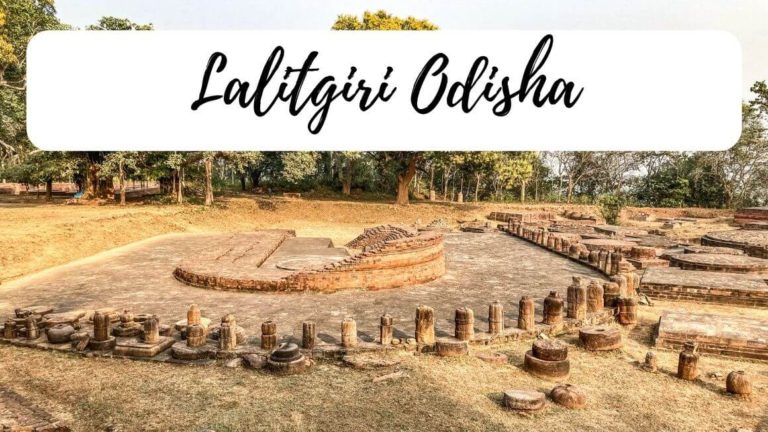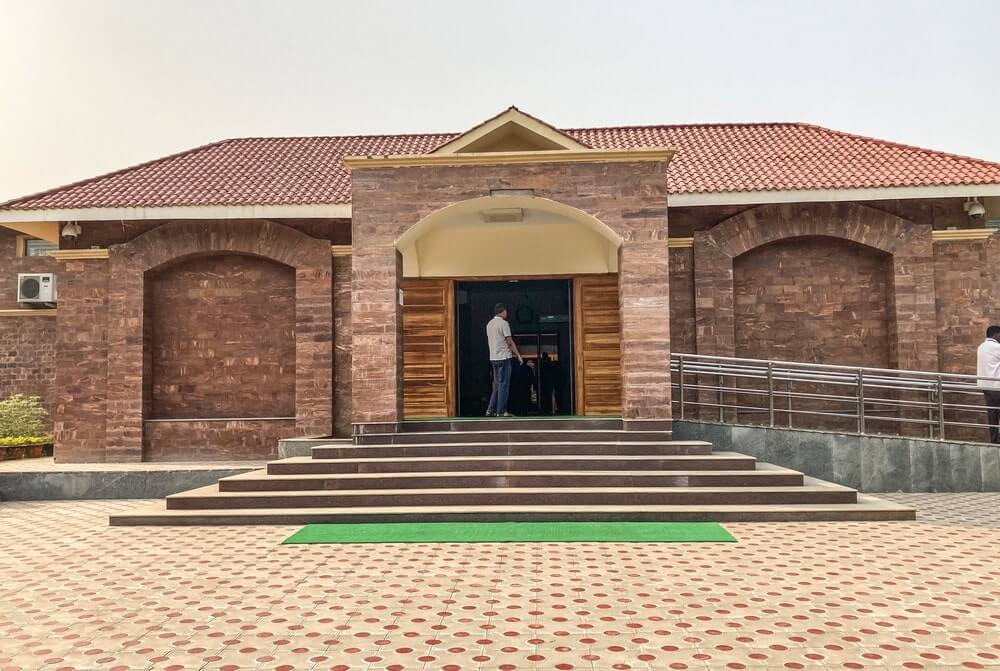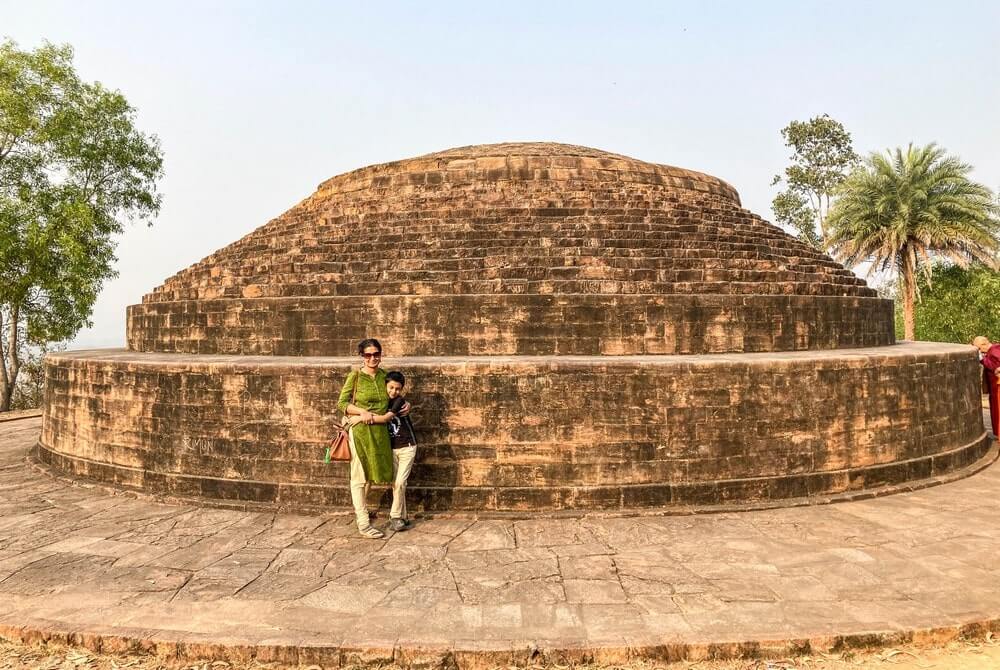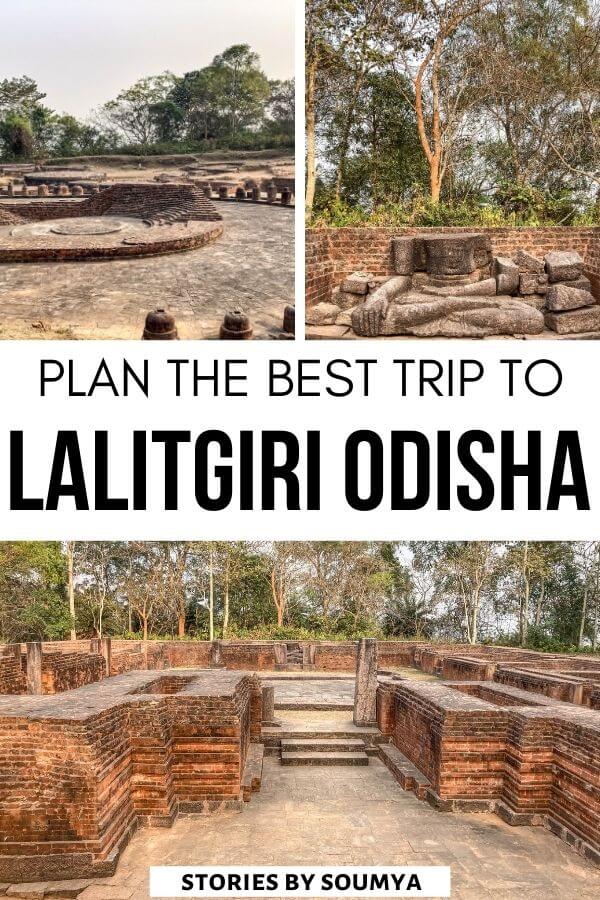Last Updated on February 25, 2021 by Soumya
When I was planning my trip to the three ancient Buddhist cities in the Diamond Triangle of Odisha, I somehow had this idea that Ratnagiri was the most important one. Every guide I read told me that I should not miss out Ratnagiri. And there was barely any noise about Lalitgiri Odisha.
However, Lalitgiri completely dumbfounded me. Not only was this the largest Buddhist site in the area but also once held Buddha’s bone relics. Plus, the Lalitgiri museum is amazing – well maintained and takes you deep into the annals of Odisha’s Buddhist history.
In this comprehensive Lalitgiri travel guide, you will learn all about:
- What to see in Lalitgiri Odisha and what not to miss?
- Why is Lalitgiri unique? Why we barely know anything about Lalitgiri museum?
- How to plan an epic day trip from Bhubaneswar to Lalitgiri?
Please note: This post may contain affiliate links which means I may earn a commission if you make a purchase by clicking a link on this post. This will be at no additional cost to you. Affiliate links help me keep this website up and running. Thanks for your support!
History of Lalitgiri Odisha
Lalitgiri is an ancient Buddhist site in the Jajpur district of Odisha, India. In fact, this is the earliest city in the Diamond Triangle triad with the oldest monastery here being built in the 2nd or 3rd century. The city was continuously inhabited between 2nd century BC – 13th century AD.
Buddhism flourished in the triad and quickly, Lalitgiri became one of the most important learning centers. Disciples flocked from different parts of the world to study here. It is also noteworthy that a casket containing Buddha’s bone relics was found at Lalitgiri. The casket is now housed in the museum located by the ruins.
Some of the most significant findings at Lalitgiri are the hilltop Mahastupa, apsidal prayer hall, Kushana Brahmi inscriptions, copper and gold coins, pottery and seals. We will find more about them here.
What to see at Lalitgiri Odisha?
The site of Lalitgiri can be divided into two parts: The museum and the ruins. I suggest you do the museum first and then go over to the ruins.
Lalitgiri Museum
As you enter the complex, you will notice an impressive, one-floor building on your right. This is the Lalitgiri Museum or the Archaeological Museum of Lalitgiri.
The museum has 6 rooms that house various artefacts excavated from the site. In 5 of 6 rooms, you will see huge statues of Buddha and the Boddhisatvas, excavated coins, pottery, and seals.
In the last room, there is a small enclosure where you will see the two relic caskets. They are housed behind a glass panel and you can only see them from a distance.
Just so that you appreciate these seemingly-normal caskets.
Both of them are made of 4 layers. Starting from the outside – these layers are khandolite, steatite, silver, and gold. One of the caskets had Buddha’s bone relics while the other was found empty.
One of the rooms, right at the center of the museum, has a glass ceiling and is stocked with beautiful statues. That makes it the most impressive.
Unfortunately, photography is not allowed inside the museum. Honestly, that is kind of weird especially in these times when most of India’s museums, including the Ratnagiri one, have opened up to this. Quite the reason why we hardly know anything about Lalitgiri’s beautiful museum.
Once done with the museum, walk toward the archaeological site from the museum until you come to a fork in the road. Turn left to explore the restored monasteries. You will encounter Monastery 1, the prayer hall, Monastery 3 & 4, and then the Maha Stupa. Once you come back to the fork, go right to find Monastery 2.
Buddhist monasteries of Lalitgiri
There are 4 Buddhist monasteries at the archaeological site of Lalitgiri in Odisha. Yes, that is considerably higher than the number of monasteries at Ratnagiri (2) and Udayagiri (2).
The four monasteries are in various states of disrepair. A couple of them have been well restored to give you a good idea of how the ground floor complex looked. One of them, the #2 monastery, is in shambles. The plan of all the monasteries is almost the same as the monasteries of Ratnagiri. Only the size differs.
There is a central courtyard at each Lalitgiri monastery surrounded by monk cells and a main shrine. Some of them have stairs to get to the upper floor. And a couple have impressive stairs to the main entrance.
Monastery 1 is the largest and double-storied. Even though the top level does not exist anymore, you can still climb the stairs for a bird’s eye view of the place. Monastery 4 is where you will find some sculptures in situ. A huge headless Buddha sits in the main shrine of this monastery.
Prayer hall or Chaitragriha
This is by far the most impressive structure at Lalitgiri Odisha. A large oval-shaped prayer hall which has nothing more than just the foundation and a few low walls remaining.
It is easy to imagine that this would have been a large prayer hall for students from all monasteries to congregate. Gives me the goosebumps to think how the place must have resonated with hymns and meditative sounds in its hey days.
Nearby, you will notice that the perimeter of the prayer hall is surrounded by a line of votive stupas. There is also evidence (big round bases) that a primary stupa and commemorative stupas were present here.
Maha Stupa of Lalitgiri
At the end of the ruins, on the top of a small hill, lies the Maha Stupa or main shrine of Lalitgiri. Climb up 48 stairs to get to this uniquely positioned stupa and get rewarded with amazing views of the valley below.
Not just that. It was inside this stupa that two small caskets (housed in the museum now), one containing Buddha’s relics, were found. This was the first discovery of its kind in Eastern India and propelled Lalitgiri to the forefront of religious importance.
Historical artefacts
A key point to note is that most of the artefacts found at the Lalitgiri Buddhist Complex have been transferred to the museum on site or others around the world. Therefore, you will not see many sculptures in situ.
I think that is what makes Lalitgiri somewhat less attractive than Ratnagiri where many artefacts and Buddha images are still at the site. That helps visitors to imagine and place the monasteries in context. Whereas at Lalitgiri, the ruins are naked – stripped off all their glory.
Is a trip to Lalitgiri worth it?
Absolutely yes! I highly recommend visiting Lalitgiri on your Diamond Triangle day trip because of the following reasons.
- Lalitgiri is one of the most sacred Buddhist sites in Eastern India. That is because Buddha’s relics were found here. You can still see the relic casket in the museum.
- The elongated, apsidal prayer hall in Lalitgiri is unique and not found elsewhere in the region.
- The hill over which the Maha Stupa is built provides some stunning views over the region.
Tickets to Lalitgiri archaeological site
You can purchase tickets to both the archaeological site and museum at the entrance gate. Unlike Ratnagiri, there is just one ticket to both the ruins and the museum.
Cost of tickets for Indian citizens and BIMSTEC citizens is INR 25. Foreigners need to pay INR 300. Children below the age of 15 enter for free.
Opening hours
The museum is closed on Fridays. The excavated site and museum are open from 9 am to 5 pm on all other days.
Best time to visit
The best time to visit Lalitgiri Odisha is during the winter months from November – February. You will be able to take a pleasant walk through the ruins while avoiding the sweltering heat of Odisha at the same time.
How to reach Lalitgiri from Bhubaneswar?
The distance between Bhubaneswar to Lalitgiri is less than 75km (46 miles). It takes less than 2 hours to get here by road.
I recommend hiring a private car/taxi for the day and visiting Lalitgiri as a day trip from Bhubaneswar. You can book an Ola/Uber or ask your hotel to arrange for a day long cab.









